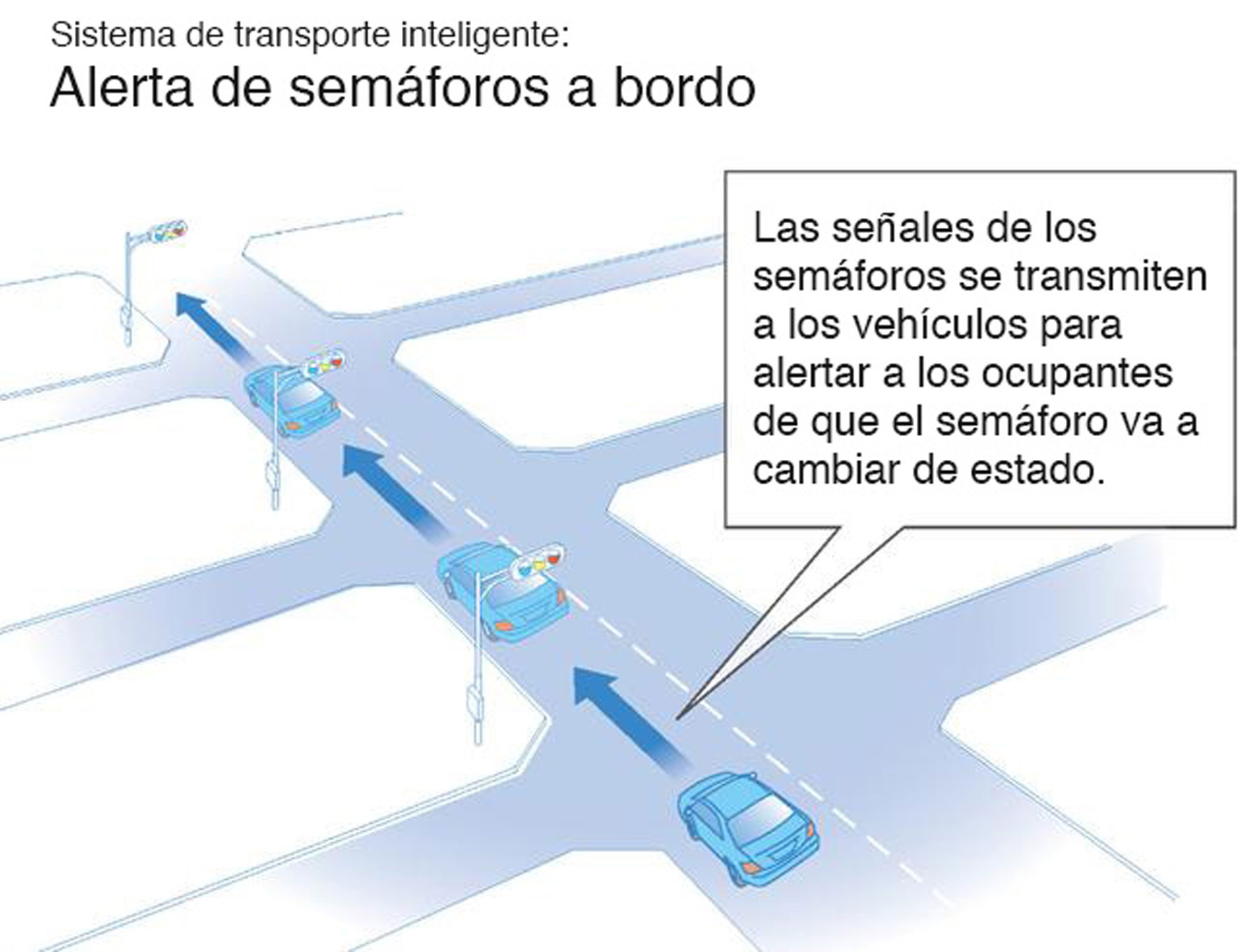Toyota will carry out in Toyota City (Japan), as of May, road tests of a driving assistance system, which uses STI intelligent transport technology (1) to transmit information on traffic lights to vehicles. The system is part of a series of assistance systems for safe driving (DSS, Driving Safety Support Systems) promoted by the National Japanese Police Agency and sponsored by the Japanese Universal Traffic Management Society (UTMS Japan).
A Toyota City road will be used equipped with a system to transmit traffic light information to vehicles with the system on board, through the 700 MHz frequency band. The system receives the information and, if necessary, warn the occupants of the vehicle through the sound equipment and the navigation system screen. Together with the independent TMC system for drivers to see red traffic lights, it is expected that by promoting deceleration when approaching a red traffic light, the system helps reduce CO2 emissions.
The transmission of traffic light information has been possible thanks to the collaboration with the National Police Agency and the Aichi Prefecture Police (Japan).
With these tests, TMC will analyze the behavior of drivers in different circumstances, to understand the extent to which vehicle-infrastructure cooperation systems can help reduce traffic accidents and CO2 emissions, and incorporate data into the future development of ITS technology.
From its concept of integral security management, TMC is taking steps to develop its cooperation-infrastructure systems for assistance to safe driving, using ITS technologies that allow connecting people, vehicles and traffic environments. TMC has been using the 700 MHz frequency band (assigned by the Japanese government for STIs) in road tests since March of last year, in an assistance system aimed at avoiding collisions caused by driver errors.
(1) Systems that seek to avoid traffic accidents alerting the driver of dangerous situations, providing visual and sound information about the state of traffic in the vicinity, reduce the environmental impact and emissions and create a more comfortable driving environment.
(2) Carry out studies, research and development in universal traffic management systems (UTMS, Universal Traffic Management Systems). UTMS Japan intends to contribute to social welfare promoting intelligent road transport, guaranteeing its fluidity and safety, as well as its harmony with the environment.
(3) STI standard in the 700 MHz band (ARIB STD-T109). Since this communication method implies electromagnetic waves with excellent propagation characteristics, it is expected to be effective to avoid collisions between crossings and collisions with vehicles that circulate in the opposite direction when making turns to the right.
(4) Type of STIs that receives information - including traffic regulation information (for example of traffic light cycles) and other aspects that the driver cannot directly see - wirelessly from the communications infrastructure installed on the tracks and in other vehicles. By providing this information to the driver, the system allows a safer driving and helps avoid accidents.






















































